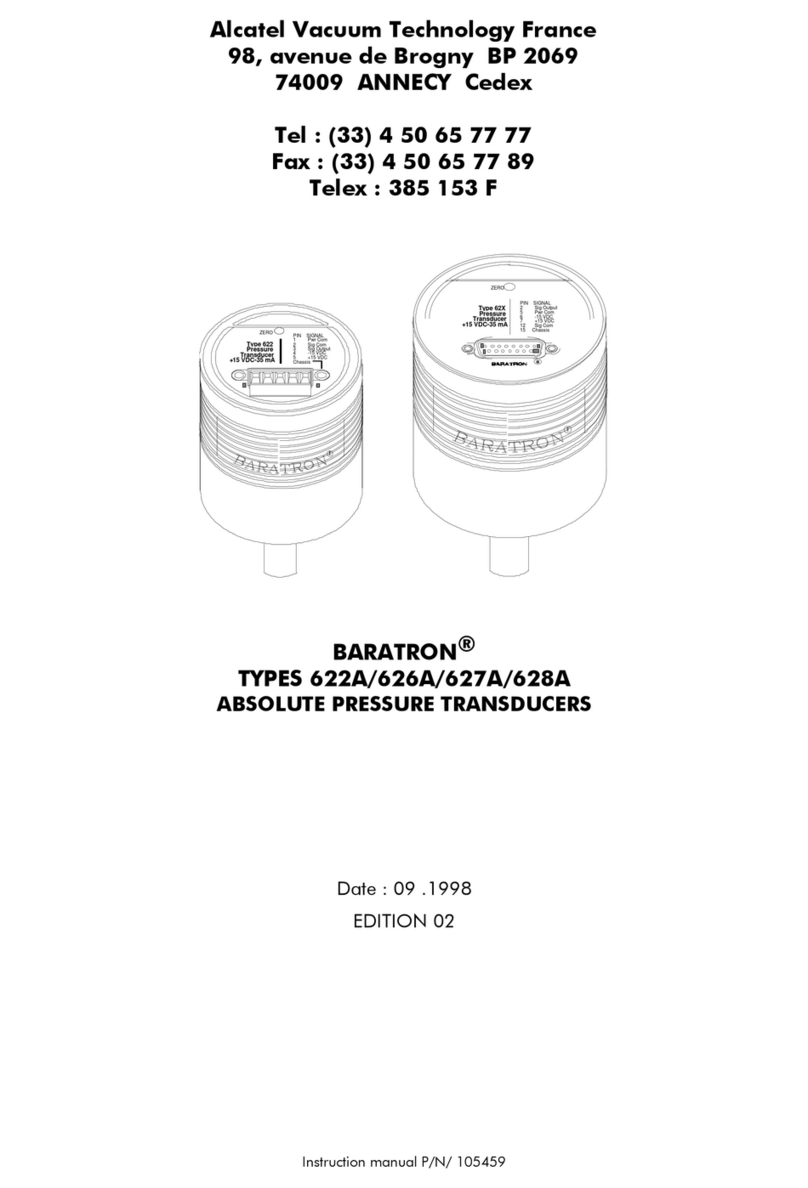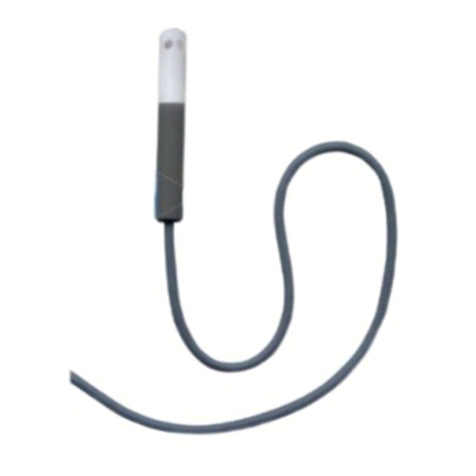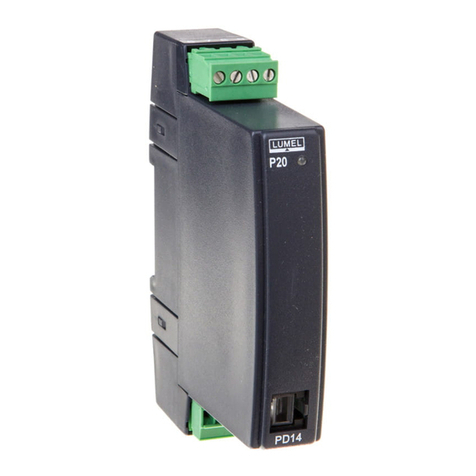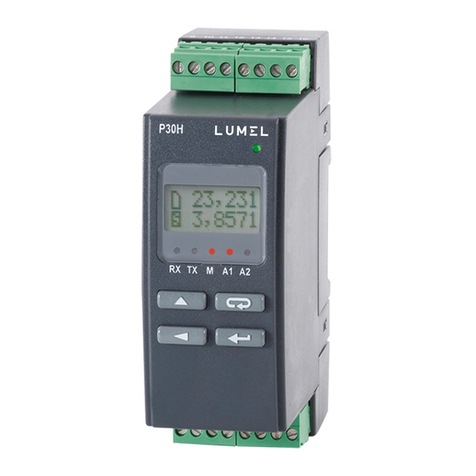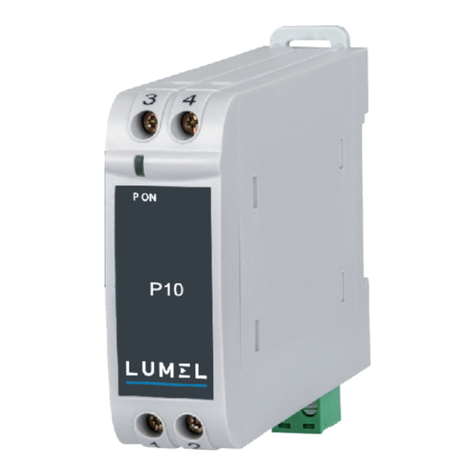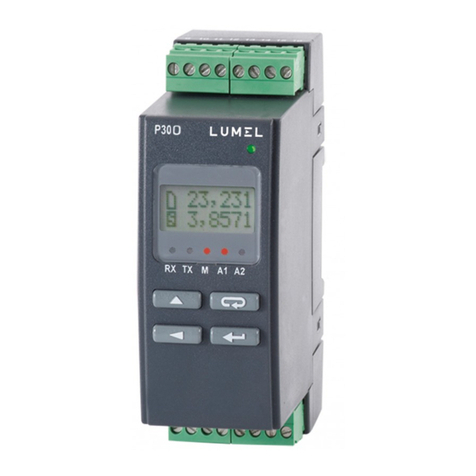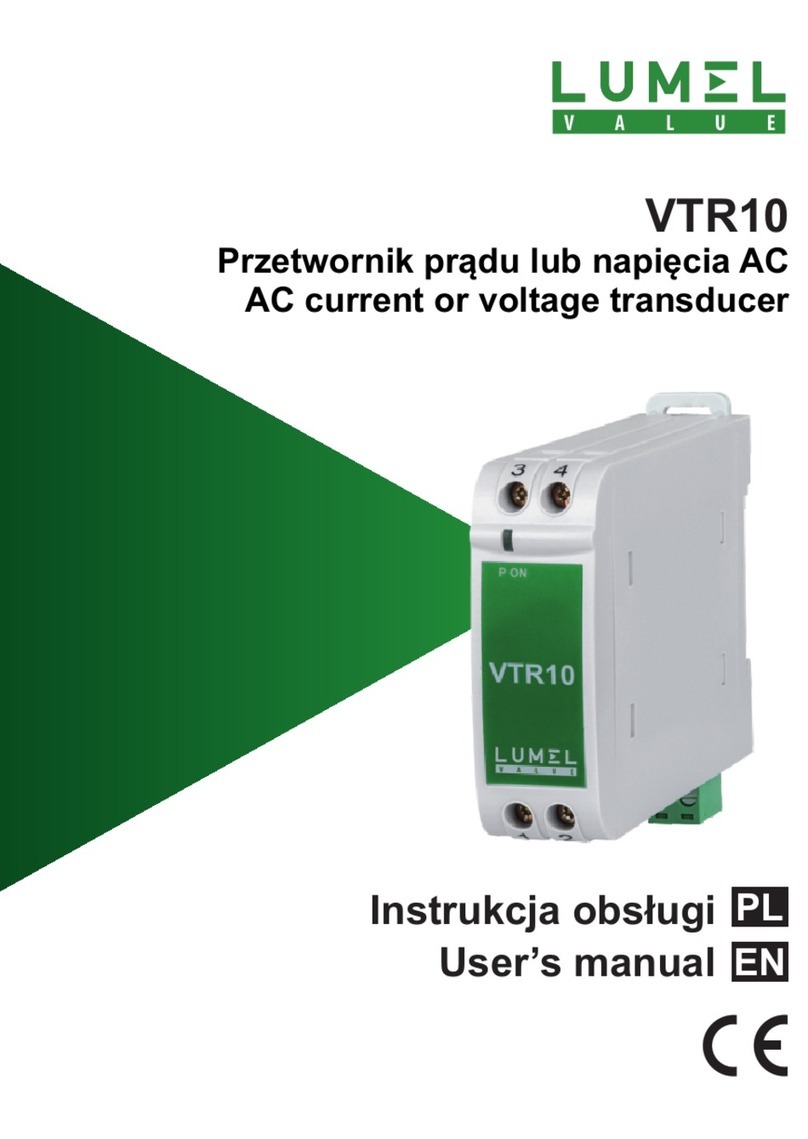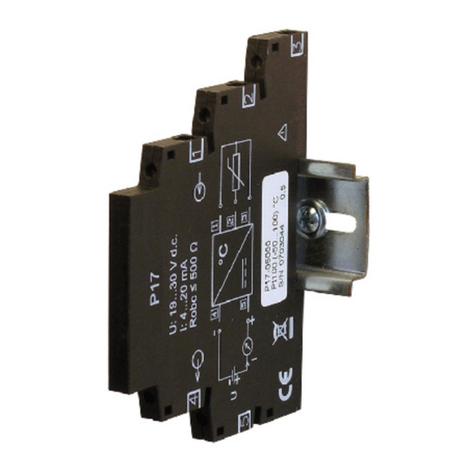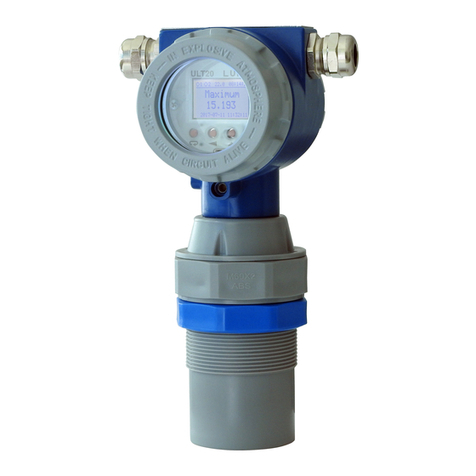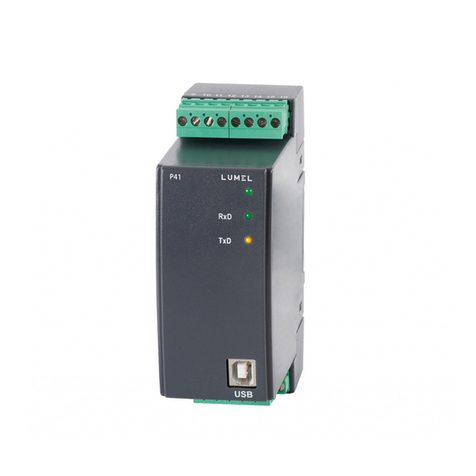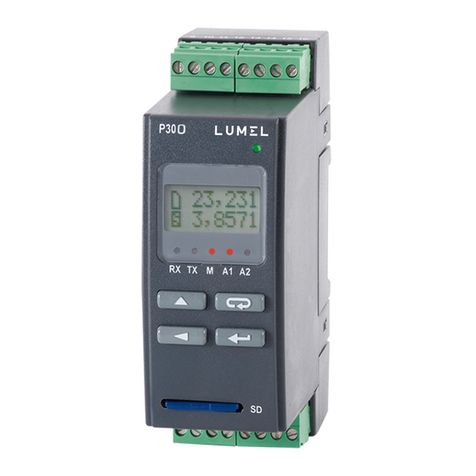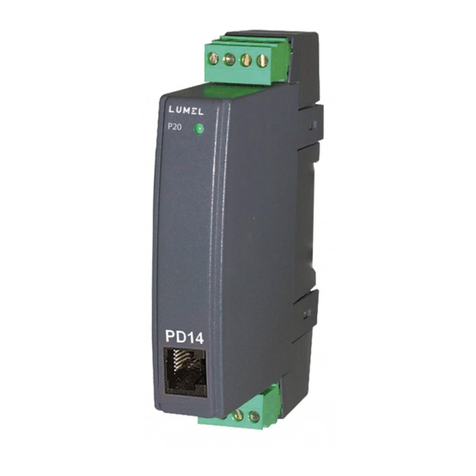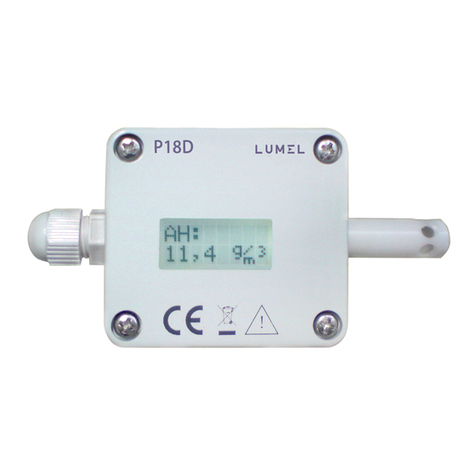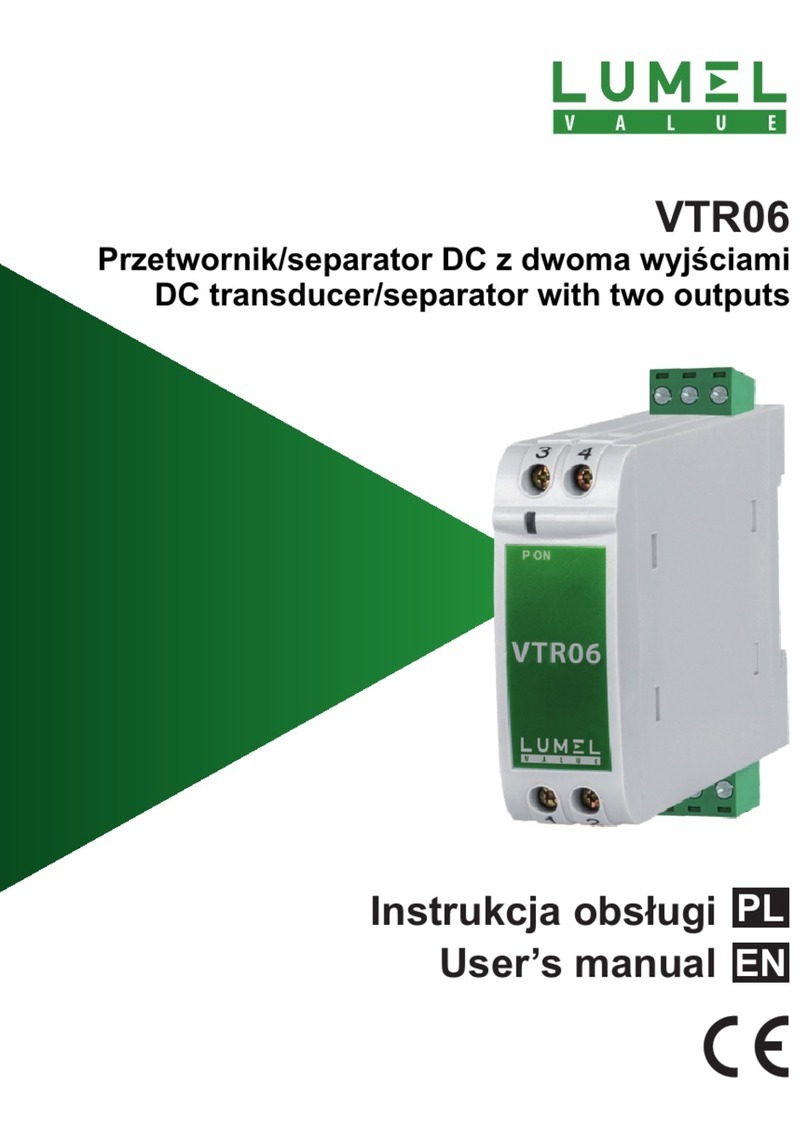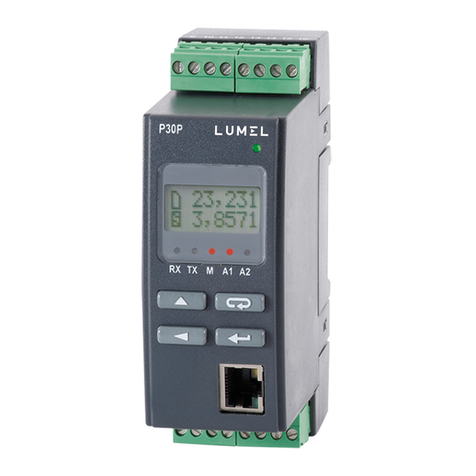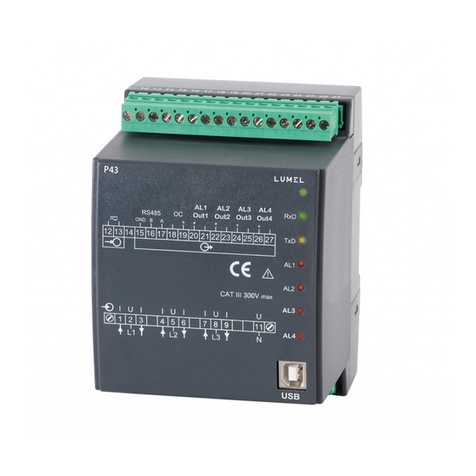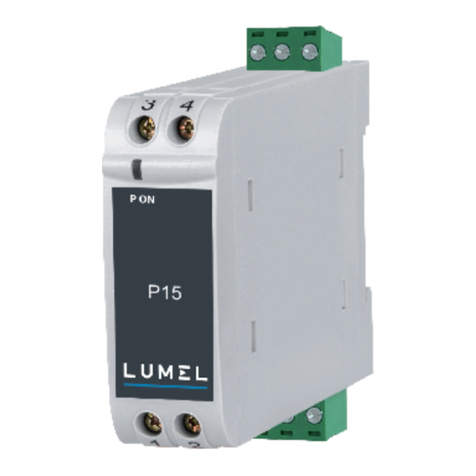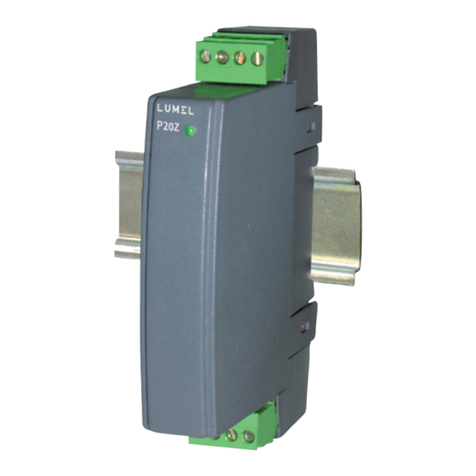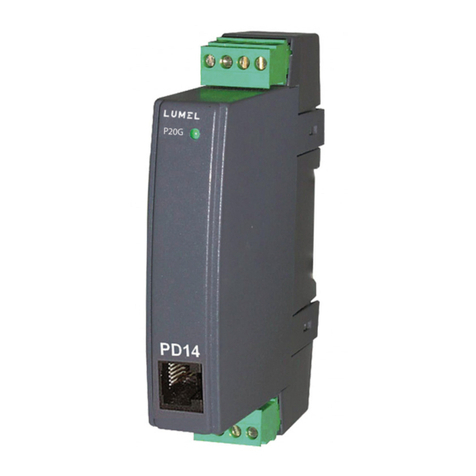6
3. OPERATIONAL SAFETY
In the safety service scope, the transducer meets to requirements of the
EN 61010-1 standard.
Observations concerning the operational safety
lAll operations concerning transport, installation, and commissioning
as well as maintenance, must be carried out by qualified, skilled
personnel, and national regulations for the prevention of accidents
must be observed.
lBefore switching transducer on, one must check the correctness
of connections to the network.
lWhen connecting the supply, one must remember that a switch or
a circuit-breaker should be installed in the building. This switch
should be located near the device, easy accessible by the
operator, and suitably marked as an element switching the
transducer off.
lDo not connect the transducer to the network through
an autotransformer.
lBefore removing the transducer housing, one must switch the
supply off and disconnect measuring circuits.
lThe removal of the transducer housing during the guarantee
contract period may cause its cancellation.
lThe programmer socket is only use to connect the PD14
programmer. After the transducer programming, one must
insert the hole plug.
lNon-authorized removal of the housing, inappropriate use, incorrect
installation or operation, creates the risk of injury to personnel
or a transducer damage.
For more detailed information, please study the User’s Manual.





